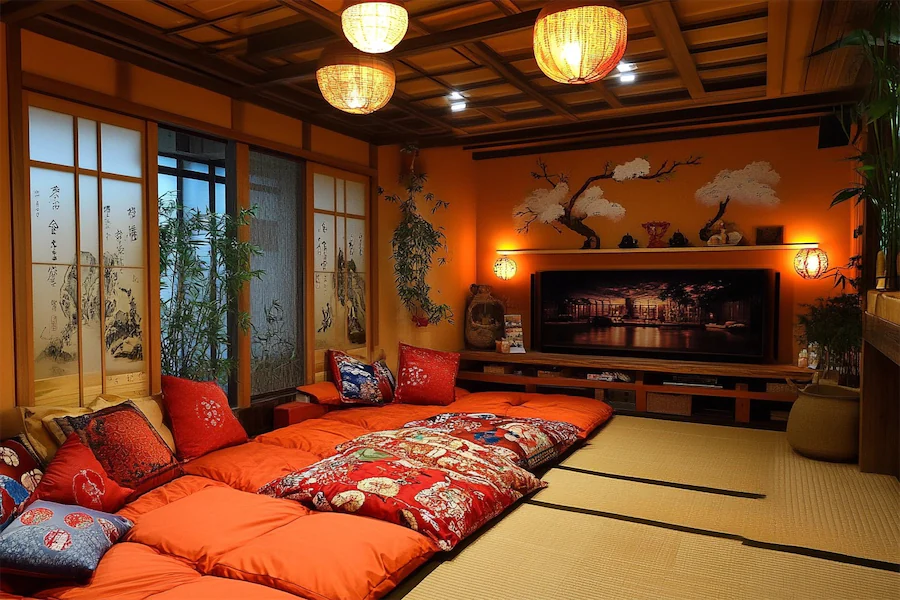Designing a traditional Japanese entertainment room involves creating a space that embodies the principles of simplicity, natural beauty, and harmony, central to Japanese interior design. Here’s a comprehensive guide to achieving this aesthetic:
Introduction to Traditional Japanese Entertainment Rooms
Traditional Japanese rooms, known as washitsu, are characterized by minimalism, natural materials, and a strong connection to nature. These spaces often feature tatami mat flooring, sliding shoji screens, and low furniture, creating a serene environment ideal for relaxation and entertainment.
History and Origins of Japanese Interior Design
Japanese interior design has evolved over centuries, influenced by cultural and religious practices such as Zen Buddhism. The emphasis on simplicity and natural elements reflects a desire to bring the tranquility of the natural world indoors, fostering a peaceful and contemplative atmosphere.
Key Features of Traditional Japanese Entertainment Rooms
- Tatami Mats: Traditional Japanese flooring made from rice straw, providing a soft and natural surface.
- Shoji Screens: Sliding doors or room dividers made from wood and paper, allowing for flexible space configuration and diffused natural light.
- Low Furniture: Incorporate low wooden tables (chabudai) and floor cushions (zabuton) to create an authentic seating arrangement.
- Tokonoma Alcove: A recessed space used to display art, calligraphy, or flower arrangements, serving as a focal point in the room.
- Natural Materials: Utilize wood, bamboo, and paper to maintain a connection with nature and achieve a harmonious aesthetic.
Applications of Traditional Japanese Style in Entertainment Rooms
- Seating Arrangements: Arrange floor seating around a low table to encourage intimate gatherings and traditional tea ceremonies.
- Media Integration: Incorporate modern entertainment systems discreetly, perhaps within wooden cabinetry, to maintain the room’s traditional aesthetic.
- Lighting: Use soft, ambient lighting with paper lanterns or wall-mounted fixtures to create a warm and inviting atmosphere.
- Decorative Elements: Display minimalistic art pieces, bonsai trees, or ikebana flower arrangements to enhance the room’s cultural authenticity.
Considerations When Designing a Traditional Japanese Entertainment Room
- Simplicity: Maintain an uncluttered space by selecting essential furnishings and decor, adhering to minimalist principles.
- Natural Light: Maximize natural light through the use of shoji screens and strategically placed windows to create a serene environment.
- Harmony with Nature: Incorporate indoor plants or design elements that reflect the natural world to foster a sense of tranquility.
Conclusion
A traditional Japanese entertainment room offers a tranquil and harmonious space, perfect for relaxation and social interaction. By focusing on minimalist design, natural materials, and cultural elements, you can create an environment that embodies the serene beauty of Japanese interior design.
